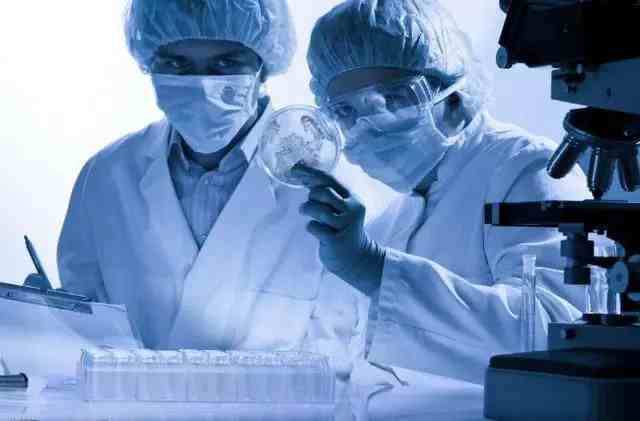An autoclave(autoclave machine) is an essential piece of equipment that is widely used in many medical and industrial fields. Its highly effective form of autoclave sterilization makes it a reliable tool for safely decontaminating various instruments.

Autoclaves are specially designed to kill germs, bacteria, and spores. It is a powerful sterilizing device as it utilizes steam to kill all different kinds of microorganisms at set pressure and temperature levels.
But does an autoclave kill all germs? Read on to learn more!
How Does an Autoclave Work?
Before we try to understand what can and cannot survive autoclaving, it’s important to understand the autoclave process and why it works so well.
Autoclave machines use steam set to high heat and pressure for a set amount of time. They heat objects above their boiling point and create a low-pressure environment.
The autoclave is composed of a sterilization chamber, a control system, and an overvoltage protection device. The use of high-temperature saturated water vapor can denature the protein of microorganisms within a certain period and lead to the death of microorganisms, to achieve the purpose of sterilizing moisture-resistant and heat-resistant items.
Since the steam in the airtight steamer cannot overflow, the boiling point of the water will also increase continuously with the pressure rising, so the temperature in the pot will also increase accordingly, and the temperature in the pot can reach 121°C under the pressure of 0.1MPa. All kinds of bacteria can be killed very quickly at this steam temperature.
Can an Autoclave Kill Everything?
Short answer: no. Autoclave machines are capable of killing all types of microorganisms such as bacteria, viruses, and even spores, which are known to survive high temperatures and can only be killed at temperatures around 130°C.
The advantage of an autoclave is that you are free to control the heat and pressure levels to thoroughly sanitize the instrument and keep it free of all harmful microorganisms, especially those that cannot be killed by ordinary methods.
This is why Autoclave machines are widely used, especially in the medical field to replace microwave ovens. They can distribute high-power energy evenly to eliminate different types of pollutants.
So far, there are no known pathogens (infectious pathogens) that cannot be killed by autoclaving, although some research is investigating whether there are types of bacteria that cannot be autoclaved.
Items that Cannot Be Sterilized in an Autoclave
While an autoclave is an excellent lab companion that will help you eliminate bacteria to the greatest extent possible, some items cannot be sterilized using an autoclave. Failure to do so may result in an explosion, corrosion of liner and internal piping, or damage to gaskets.
1. Explosive substances: ethylene glycol dinitrate (nitroglycol), nitroglycerin, nitrocellulose (nitrocellulose filter), and all nitrate-containing esters. Trinitrobenzene, yellow dynamite, picric acid, and all flammable and explosive nitro, peracetic acid, methane, ethyl, methanol, hydrogen peroxide, peroxide, benzoyl, benzoyl, and organic peroxides oxide.
2. Combustible substances: metal lithium, potassium, sodium, yellow phosphorus, phosphorus, sulfide, red phosphorus. Gelatin, calcium carbide (calcium carbide), calcium oxide (lime), magnesium powder, sodium dithionite.
3. Oxidizing agents: potassium chloride, sodium chloride, ammonium chloride, and other chlorides. Potassium perchlorate, sodium perchlorate, ammonium perchlorate, and other high chloride compounds (powders). Potassium nitrate, sodium nitrate, ammonium nitrate, and other nitrates. Potassium peroxide, sodium peroxide, barium peroxide, and other inorganic peroxides. Sodium chlorite and other hypochlorites, calcium hypochlorite, and other hypochlorites.
4. Flammable substances: gasoline, acetaldehyde (acetaldehyde), propylene oxide, propylene oxide, carbon disulfide, and other substances whose ignition point is between -30°C and 0°C.
Methanol, ethanol, xylene, benzyl, benzyl acetate, and other substances (alcohols) whose ignition point is between 0°C and 30°C. Kerosene, kerosene, isoamyl alcohol, acetic acid (acetic acid), and other similar substances with ignition points between 30°C and 65°C.
5. Flammable gases: hydrogen, acetylene, methane, ethane, propane, butane, and other flammable gases.

How Long Do Items Remain Sterile?
While an autoclave can kill any type of microorganism, maintenance is an important factor to keep in mind.
Maintenance will ensure that your freshly autoclaved instruments are not re-contaminated with hazardous and infectious substances.
After autoclaving instruments, it is important to ensure they are stored properly.
When packing them, make sure that the packaging is free of any structural defects such as holes, scratches, or openings, as this can leave the instrument vulnerable to contamination.
It is also important to pay attention to the expiry date on the packaging. Some packages will say when they must be replaced and how long they are good for.
Usually, they last for a year before they can be changed again.
It is important to maintain optimal storage conditions so that your freshly autoclaved instruments do not become recontaminated.
However, it is also important to pay attention to shipping conditions and frequency of handling.
Ensure that the environment of the instrument, once contained, does not compromise the hygiene of the instrument.
By servicing the instrument after autoclaving, you can ensure that no harmful microbes can take over.
Summary
Without a doubt, an autoclave is recognized as one of the most efficient and reliable methods of thoroughly sterilizing any instrument.
Using steam or moist heat creates more heat and energy that can be easily transferred across objects. This method, which heats the object above the boiling point, can kill stubborn microorganisms such as spores that cannot be killed with ordinary boiling water.
Therefore, an autoclave is capable of killing any microorganisms. As of today, there are no known microorganisms that can survive autoclaving.
However, after autoclaving, it is important to store your instruments properly so that they are not exposed to microorganisms. After all, it has just been disinfected!








